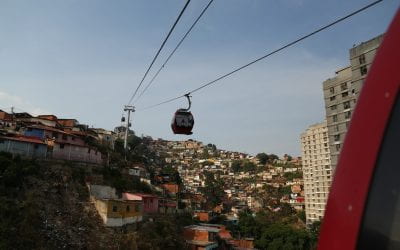Editor’s Letter
Questions and Answers (sort of)
Sometimes I get asked how I get my ideas. I tell them about my long list. Some ideas come from things I read; some come from talks or news events; some come from readers; some come from colleagues and professors.
My colleagues and friends often inquire how we manage to get the great visual images for issue after issue when we don’t pay our collaborators or photographers. I tell them ReVista is aimed at building community, that it’s a collective exploration of many different topics, and besides, it provides a great item for a portfolio.
And now I can tell them about our first ever “Best of ReVista” photo contest that pro- vides a cash award to the winners in professional and emerging photographers categories (see p. 46 for this year’s winners and honorable mentions).
The questions always bring the conversation back to the topic of the next ReVista. But when I tell my friends and colleagues this issue is on the biology of culture, there is inevi- tably a pause. A long one.
I can’t quite remember when I first heard the term “biology of culture.” It may have been when Brian Farrell, now the director of the David Rockefeller Center for Latin Ameri- can Studies, gave a talk on “Why We Animals Sing.” He wasn’t my boss then, just a dis- tinguished professor of biology in Harvard’s Department of Organismic and Evolutionary Biology and the father of my long-time intern Gabriela Farrell (who has now graduated!)
I was curious about the subject and his eloquent talk got me hooked. But I’m not sure it’s the first time I heard the term. It may have been when I learned he was teaching a course on the subject or when he gave another talk.
Every time I heard the term, I thought I understood it: the fascinating deep relationship between science and the humanities or, as he describes in this issue “the almost unfathom- able, cumulative impact of a intimate, daily connection of humans to their environment over tens of thousands of years.” That’s the direction DRCLAS is going in, a medley of science and humanities.
So I was thrown aback when a professor friend looked at me with a worried eye and asked about the biology of culture, “Is that determinism?” And I knew I was hooked when I launched into a passionate mini-lecture about how the biology of culture is the exact opposite of determinism.
Now when my friends ask, “What is it?” I tend to say, “Oh, you’re going to get to read about coffee and chocolate and healing baths and all sorts of interesting stuff, but read Brian Farrell’s ‘First Take’ first. He can explain it a lot better than I can!”
So read on, reader, and enjoy this issue. You will learn a lot. I did too.
Winter 2017, Volume XVI, Number 2
Related Articles
Editor’s Letter – Animals
Editor's LetterANIMALS! From the rainforests of Brazil to the crowded streets of Mexico City, animals are integral to life in Latin America and the Caribbean. During the height of the Covid-19 pandemic lockdowns, people throughout the region turned to pets for...
Editor’s Letter – Museums
Editor's LetterMuseums. They are the destination of school field trips, a place to explore your own culture and a great place to run around and explore. They are exciting or boring, a collection of objects or a powerful glimpse into other worlds. Until recently—with...
Editor’s Letter: Transportation
Bridges. Highways. Tunnels. Buses. Trains. Subways. Transmilenio. Transcable. When I first started working on this issue of ReVista on Transportation (Volume XXI, No. I), I imagined transportation as infrastructure.


